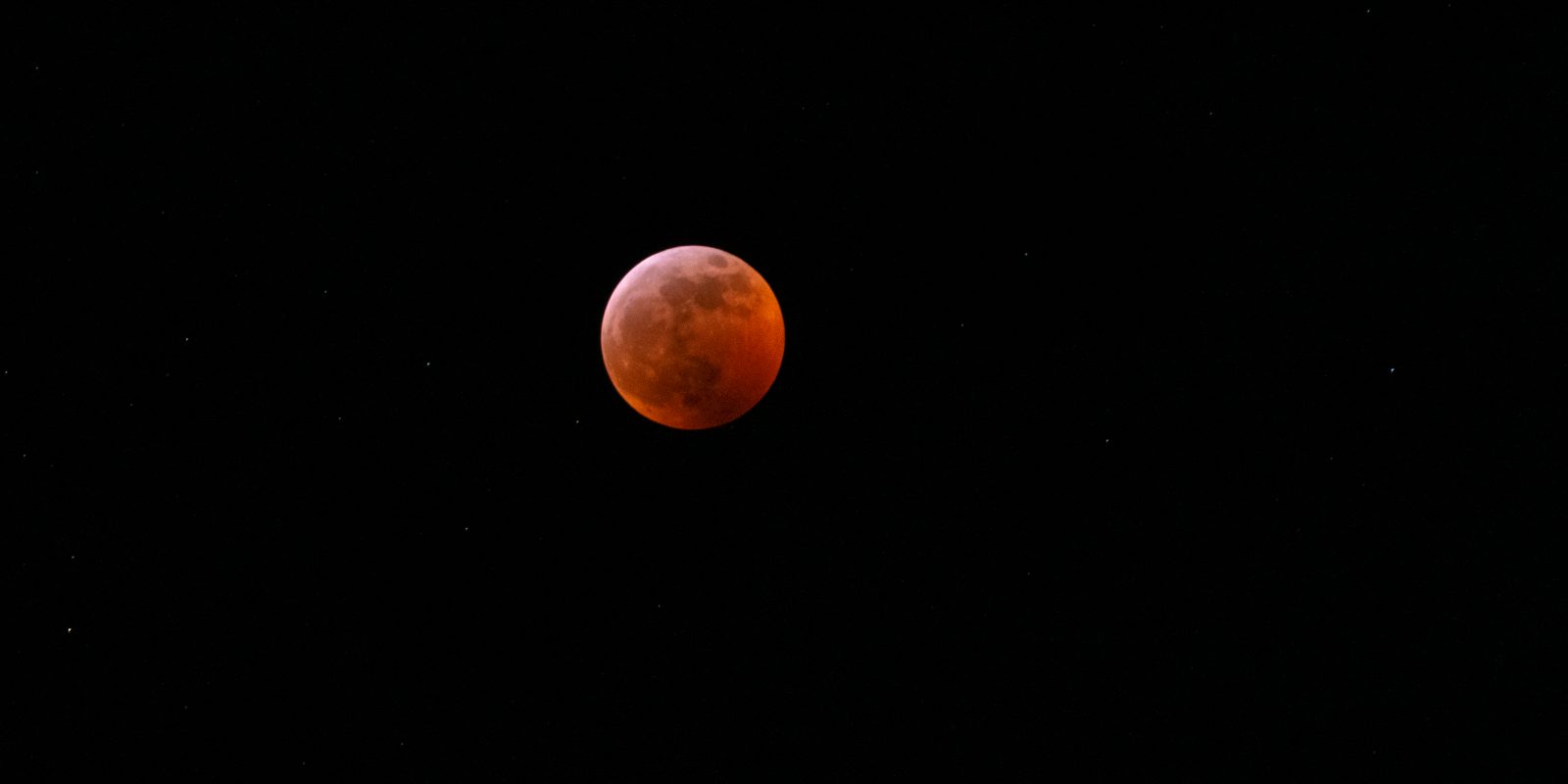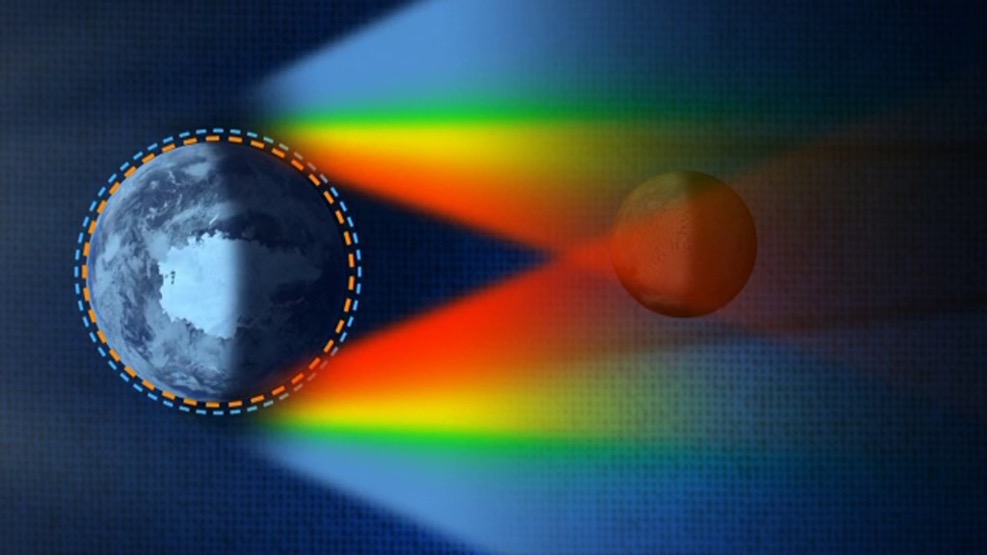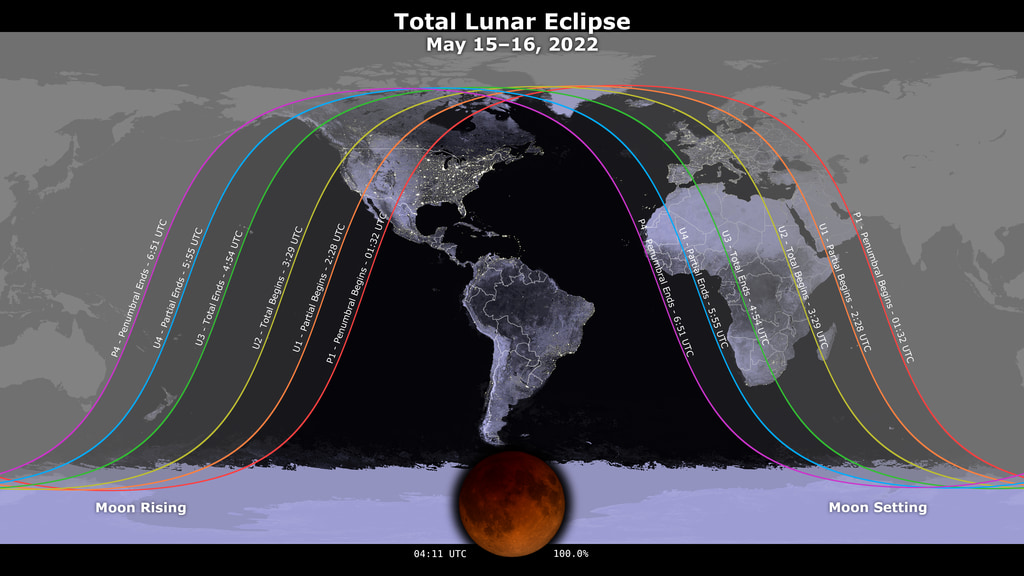
The first total lunar eclipse of 2022 will happen on the night of May 15 starting at 9:32 p.m. EDT and will reach the maximum at 12:11 a.m. EDT on May 16. In this article, we will discuss the different ways you can see or watch the progression of the total lunar eclipse.
Let’s start out with a brief explanation of what a lunar eclipse is and how it works. Every so often, as the Moon orbits the Earth and the Earth orbits the Sun, they all align where the Moon passes into the shadow of the Earth. There are partial lunar eclipses where only part of the Moon will enter into the Earth’s shadow, but the entire Moon enters the shadow for a total eclipse. The Earth’s shadow is also referred to as the umbra. When the Moon enters this area, it will turn a reddish hue. This is why you may hear some people refer to them as “Blood Moons.”
This reddish hue is caused by the atmospheric scattering of white light from the Sun. White light is made up of all the colors in the visible spectrum and the different colors correspond to different wavelengths. Red light has the longest wavelength while violet has the shortest within the visible spectrum. The longer wavelength of red light means it doesn’t get as affected by the atmosphere and generally continues straight through. This is the same reason the sky appears red and orange at sunrise and sunset.

Where to see the total lunar eclipse
The entirety of Central and South America will be able to see the entire total lunar eclipse from start to end. The entire eastern seaboard of the United States is also included in this area with the midwest region being on the edge. The further west you go in the United States and Canada, the less you can expect to see. The entire United States and most of Canada will see at least some of the eclipse. This is also true for all of Africa and most of Europe. The visibility of the eclipse does entirely depend on local weather and cloud coverage. You can check your local weather stations for the expected forecast, or you can check out the Astrospheric app. This free app is available on Android, iOS, and on the web, and will show you the forecasted cloud coverage in your area. This is an astrophotography tool but will be useful for getting an idea of what to expect.

Where to watch the total lunar eclipse
If you live in an area where you won’t see totality or will be missing out due to weather, NASA will be hosting a live stream starting at 11 p.m. EDT going through the totality of the eclipse. While not as exciting as watching an eclipse with your own eyes, you are likely to learn something you didn’t know about eclipses by watching! Depending on local conditions, the Space Explored Team may host our own live stream on our YouTube channel. Stay tuned to our Twitter which is where we will announce our stream if we can host one.
Enjoy reading Space Explored?
Help others find us by following on Apple News and Google News. Be sure to check us out on YouTube, Twitter, Facebook, and Instagram, join our Discord!
FTC: We use income earning auto affiliate links. More.






Comments